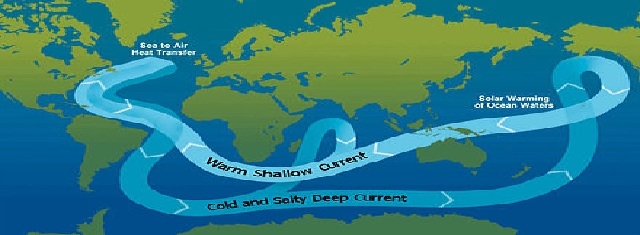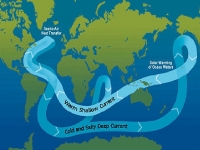Lifestyle
WORLD HALFWAY TOWARDS TRESHOLD THAT COULD RESULT IN DANGEROUS CLIMATE CHANGE
TO PASS THE MILESTONE OF 1C OF WARMING

CLIMATE CHANGE (Source: Wikipedia)
Climate change is set to pass the milestone of 1C of warming since pre-industrial times by the end of 2015. The world is halfway towards the threshold that could result in dangerous climate change, scientists have warned after revealing that average global temperatures have recorded a rise of one degree Celsius for the first time.
Climate negotiations often revolve around keeping the rise in average global temperatures to a maximum of 2°C above pre-industrial levels. Warmer than this, it is said, and climate change-induced natural disasters will increase dramatically in severity, causing untold damage to life and property, alongside shrinking the habitability of environments across the globe.
Climate negotiations often revolve around keeping the rise in average global temperatures to a maximum of 2°C above pre-industrial levels. Warmer than this, it is said, and climate change-induced natural disasters will increase dramatically in severity, causing untold damage to life and property, alongside shrinking the habitability of environments across the globe.
The Met Office´s data from January to September 2015 already shows global average temperatures have risen by 1C for the first time compared to pre-industrial times. The rise is due to the “unequivocal“ influence of increasing carbon emissions combined with the El Niño climate phenomenon currently under way. The Met Office expects the full-year temperature for 2015 to remain above 1C. It was below 0.9C in 2014, marking a sharp rise in climate terms.
The Met Office is able to draw on a massive data set of temperatures from as far back as the 1800s, and then average the temperatures recorded between 1850 and 1900 to calculate pre-industrial temperatures. A few years ago the Intergovernmental Panel on Climate Change found that the average global temperature had increased by 0.85°C between 1880 and 2012, but this new research shows how this has continued to rise. During the first nine months of 2015, the global mean temperature hit 1.02°C, with a margin of error of 0.11°C either side, with three months still to go in the year. (iflscience)
Latest figures on greenhouse gas concentrations show that levels of carbon dioxide, methane and nitrous oxide from industrial, agricultural and domestic activities reached record levels ““ with global average concentrations of carbon dioxide in spring 2015 crossing the 400 parts per million barrier for the first time....The findings came out ahead of the Paris meeting on climate change designed to agree on a binding international treaty on carbon emissions that are aimed at limiting global warming to a maximum of 2C above pre-industrial levels. (The Independent)
The impacts of climate change are analysed in other research presented on Monday by the UK´s Avoid project. It found that, compared to unchecked global warming, keeping the temperature rise below 2C would reduce heatwaves by 89%, flooding by 76%, cropland decline by 41% and water stress by 26%.
Prof Joanna Haigh, at Imperial College London and part of the Avoid team, said the last major UN climate summit in Denmark in 2009 failed, making Paris crucial in preventing widespread damage: 'Copenhagen was generally considered a complete disaster, so it is very important that countries get together at Paris.'
Prof Joanna Haigh, at Imperial College London and part of the Avoid team, said the last major UN climate summit in Denmark in 2009 failed, making Paris crucial in preventing widespread damage: 'Copenhagen was generally considered a complete disaster, so it is very important that countries get together at Paris.'
'This year marks an important first, but that doesn't necessarily mean every year from now on will be a degree or more above pre-industrial levels, as natural variability will still play a role in determining the temperature in any given year,' the Head of Climate Monitoring and Attribution at the Met Office, Peter Stott, said in a statement. 'As the world continues to warm in the coming decades, however, we will see more and more years passing the 1°C marker ““ eventually it will become the norm.' (iflscience)
Ruby BIRD
http://www.portfolio.uspa24.com/
Yasmina BEDDOU
http://www.yasmina-beddou.uspa24.com/
Ruby BIRD
http://www.portfolio.uspa24.com/
Yasmina BEDDOU
http://www.yasmina-beddou.uspa24.com/
Yasmina Beddou Climate Change Milestone 1 Degree Celcius World Halfway Scientists Uncharted Territory 2015 Hottest On Record Temperatures Past Records
Liability for this article lies with the author, who also holds the copyright. Editorial content from USPA may be quoted on other websites as long as the quote comprises no more than 5% of the entire text, is marked as such and the source is named (via hyperlink).






